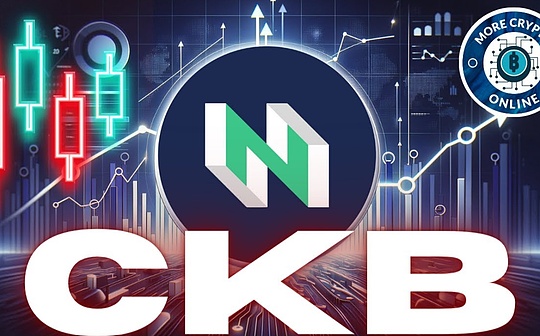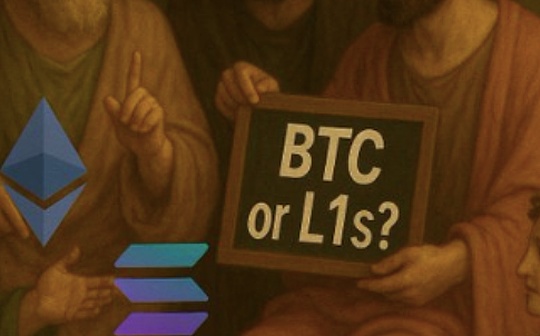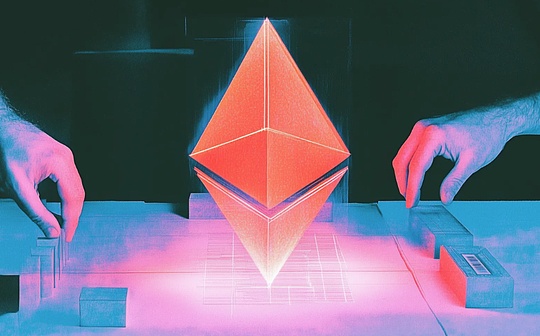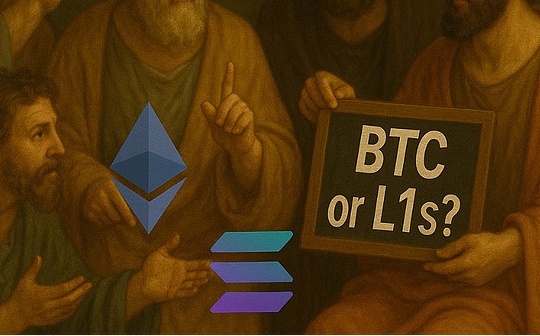
Author: ningning Source: Mirror
Foreword
During the fourth round of Bitcoin’s halving cycle, the ORDINALS protocol and the explosive use of similar protocols made the encryption industry realize that the positive and external value of Bitcoin L1 -level issuance assets and trading assets on Bitcoin’s main network consensus and ecological development, Can be described as the “Uniswap moment” of the Bitcoin ecosystem.
Bitcoin’s programmable evolution and iteration are the result of market governance of the Bitcoin community’s opinion, not for BTC’s Holder, for the BUILDER of the block space, and so on.
At present, by enhancing the programming of Bitcoin, the use rate of Bitcoin’s main network block space has become a new design space for the Bitcoin community consensus.
Unlike Ethereum and other high -performance public chains. In order to ensure the simplicity and lightweight of the UTXO set, Bitcoin’s programmatic design space is highly limited. Basic constraints are how to use scripts and OP Code to operate UTXO.
The classic Bitcoin programmable scheme includes status channels (lightning networks), client verification (RGB), side chain (liquid network, Stacks, RootSock, etc.), counterparty, Omni Layer, Taproot Assets, DLC, etc.Since 2023, the emerging Bitcoin programming schemes include Ordinals, BRC20, Runes, Atomicals, Stamps, and so on.
After the second wave of inscriptions ended, the new generation of Bitcoin programmable solutions, such as CKB’s UTXO homogeneous binding scheme, EVM compatible Bitcoin L2 solution, DriveChain solution, and so on.
Compared with EVM compatible Bitcoin L2 solutions, the Bitcoin programmable solution of Bitcoin (Common Knowledge Base) is a native, secure, safe, and non -introduced hypotherapy solution in Bitcoin’s programmatic modern design space.Compared with the DriveChain scheme, it does not require any changes in the Bitcoin protocol level.
In the expected future, Bitcoin’s programmable growth curve will go through a stage of accelerated growth. The Bitcoin ecological assets, users, and applications will usher in a wave of Xuanwu Ji.The influx Bitcoin developers provide the ability to use modular stacks to build protocols.In addition, CKB is exploring integrated Lightning Networks with UTXO Stack, and uses Bitcoin’s native programming to realize the interoperability between new protocols.
Bitcoin programmable naming space
Blockchain is a machine that creates trust.Like all Western philosophy is Plato’s footnote, everything in the encrypted world (assets, narrative, blockchain networks, agreements, DAOs, etc.) is Bitcoin’s biology and derivatives.
In the process of collaborative evolution of the Bitcoin MAXI and the expansion, whether the Bitcoin main network supports the complete dispute between the Turing to the isolation witness and the large block expansion plan, Bitcoin is constantly split.This is not only the new encrypted projects and the consensus of the encrypted projects, but also strengthen and consolidate Bitcoin’s own community consensus. This is a process of completing self -confirmation at the same time as others.
Due to the mysterious disappearance of Satoshi Nakamoto, the Bitcoin community governance does not have the governance structure of “enlightened monarchy” like Ethereum. Instead, it is a balanced governance model that is open to open games by miners, developers, communities, and markets.This gives Bitcoin’s community consensus once and abnormally stable.
At present, the characteristics of the Bitcoin community consensus are: consensus is not command and control, minimizing trust, decentralization, anti -examination, pseudo -anonymity, open source, open collaboration, license exemption, legal neutrality, homogeneity, forward compatibility, forward compatibilityTo minimize resource use, verification & gt; calculation, convergence, non -variability of transactions, anti -DOS attacks, avoiding competing entry, stability, consistency, solidification, the principles of conflict, collaborative advancement, etc.[1]
The current form of Bitcoin’s main network can be regarded as an instantiated result of the above Bitcoin community consensus characteristics.Bitcoin’s programmatic design space is also defined by the consensus characteristics of the Bitcoin community.
Bitcoin programmable classic design space
When other public chains are trying to modularize, parallelization, etc., when exploring the design space of the blockchain solution, the design space of the Bitcoin protocol has always focused on scripts, OP CODE and UTXO.
Two examples of typical examples are the two major upgrades of the SEGWIT hard fork and Taproot soft fork of Bitcoin’s main network since 2017.
In August 2017, the SEGWIT hard fork, a new 3M block of the 1m main block was specially saved for signatures (witnesses, Witness), and set the weight of the signature data to the main block data of the main block data when calculating the cost of miners./4, to maintain a consistency of UTXO output and create a UTXO output cost to prevent the abuse of UTXO to find zero to increase the expansion speed of UTXO set.
The Taproot soft fork in November 2021 saves UTXO verification time and the block space occupied by multiple signatures by introducing the Schnorr multi -signature scheme.
>
1 UTXO’s key set (picture source: Learnmeabitcoin.com)
UTXO (unprepared transaction output) is the basic data structure of the Bitcoin main network. It has the characteristics of atomic, non -homogeneous, and chain coupling.Each transaction on the Bitcoin main network will consume 1 UTXO as the input, and create an integer N new UTXO output.Popular understanding, UTXO can be regarded as banknotes such as US dollars, euros and other banknotes running on the chain. It can spend, find zero, split, combine, etc., but its smallest atomic unit is Sats.1 UTXO represents a new state of a certain time.The UTXO set means the latest state of the Bitcoin main network at a certain time.
By maintaining the simplicity, lightweight, and provenability of the Bitcoin UTXO set, the state of the Bitcoin’s main network is successfully stable at the level of the law that is compatible with the law of the hardware Moore, thereby ensuring the participation of the entire node of the main node of the Bitcoin network.And trading verification.
Correspondingly, Bitcoin’s programmatic design space is also subject to the consensus characteristics of the Bitcoin community.For example, in order to prevent potential security risks, Satoshi Nakamoto decided to remove the OP-CAT operating code in August 2010, and the operating code was a key logic for the comprehensive level of Bitcoin Turing.
Bitcoin’s programmable implementation path does not adopt a chain virtual machine (VM) solution like Ethereum and Solana. Instead, he chooses to use scripts and operating codes (OP CODE) to input fields, output fields and testimony of UXTO, transaction, transaction, transaction, transaction, and transaction.Data (Witness) and other programming operations.
Bitcoin’s programmatic main toolboxes are: multiple signatures, time locks, hash locks, process control (OP_IF, OP_ELIF).[2]
In the classic design space, Bitcoin is programmable very limited. It only supports several verification procedures, and does not support the state storage and chain computing on the chain.Programmable core functional component.
Bitcoin programmable Renaissance
But Bitcoin’s programmatic design space is not a fixed state.Instead, it is closer to a dynamic spectrum that changes over time.
Different from the stereotypes of the development of Bitcoin’s main network in a stagnant state, in the case of various consensus vector limit design space, the development, deployment, adoption, and promotion of new scripts and new operating codes of the Bitcoin main network is always ongoing.The tense, and even caused a fork war in the encrypted community at some time (such as the SEGWIT hard fork).
Take the change of the use of Bitcoin main network script type as an example, we can clearly perceive the changes in it.Bitcoin main network output type scripts can be divided into three categories: original script Pubkey, Pubkeyhash, enhanced script Multisig, scripthash, witness script Witness_v0_Keyhash, Witness_v0_Scripthash, Witne ss_v1_taproot.
>
Bitcoin main network full historical output type Source: dune
From the trend chart of the full historical output type of the Bitcoin main network, we observe a basic fact: the programmatic enhancement of the Bitcoin main network is a long -term historical trend, the enhanced script is swallowing the original script, and the witness script is swallowing enhancement.The share of the script.The wave of Bitcoin L1 asset issuance based on the Ordinals protocol of SEGWEIT enhanced scripts and Taproot witnessed scripts is not only a new stage of Bitcoin’s main programmable historical trend, but also a new stage of Bitcoin’s main network.
The Bitcoin main network operating code also has a similar evolution process to the Bitcoin main network script.
For example, the Ordinals protocol is to achieve its functional design by combining Bitcoin’s main network script Taproot Script-Path Spend and operating code (OP_FALSE, OP_IF, OP_PUSH, OP_ENDIF).
>
1 inscription example of the order of order
Before the Ordinals protocol was officially born, Bitcoin’s programmatic classic scheme mainly included status channel (Lightning Network), client verification (RGB), side chain (LIquid Network, Stacks, RootSock, etc.), Counti Layer, DLC, Omni Layer, DLCetc.
The Ordinals protocol serializes Uxto’s minimum atomic unit, Satoshi, and then engraved the data content in UTXO’s Witness field, and is associated with a serialized specific Cong, and then the indexer under the chain is responsible for the index and execution.Programmable operation of these data states.This new Bitcoin programmable paradigm is vividly metaphorized as “golden carving”.
The new paradigm of the Ordinals protocol has stimulated a larger -scale encrypted community to use Bitcoin’s main network block space issuance, casting and trading NFT collectibles and MEME type Token (which can be called inscriptions).The first time has its own bitcoin address.
However, the programmability of the Ordinals protocol inherits the programming of Bitcoin, and only supports the three functional methods of deploy, mint, and Transfer.This allows the Ordinals protocol and its followers BRC20, Runes, Atomicals, Stamps, etc., which are only suitable for application scenarios for asset issuance.The support of DEFI application scenarios such as transactions and loans that require status calculation and status storage is relatively weak.
>
3 types of TX in 3 types of Ordinals protocol (source: dune)
Liquidity is the source of asset vitality.Due to the natural characteristics of the Ordinals type Bitcoin programming protocol, it is provided by the re -issuance of inscription assets and lights, which will affect the value generated by the whole life cycle of an inscription asset.
In addition, the Ordinals and BRC20 protocols also have suspicions of abuse of witnessing data space, and objectively cause the Bitcoin’s main network state explosion.
>
Bitcoin block space changes (picture source: dune)
As the reference department, the main source of the Ethereum main network GAS fee is the DEX transaction GAS fee, the data availability fee of L2, and the stable coin transfer GAS fee.Compared with the Ethereum main network, the Bitcoin main network has a single type of income, strong periodic, and high volatility.
The programmable performance of the Bitcoin main network cannot meet the demand for the supply side of the Bitcoin main network block space.To reach the stable and sustainable block space income status of the Ethereum main network, it requires Bitcoin ecological native DEX, stablecoin and L2.The prerequisite for implementing these protocols and applications is that the Bitcoin programming protocol needs to provide Turing’s complete programming capabilities.
Therefore, how to achieve the complete programming of the Bitcoin Turing in natively, and at the same time restricts the negative impact of Bitcoin’s main network status, has become the current manifestation of the Bitcoin ecosystem.
Bitcoin programmable CKB solution
At present, the comprehensive programmatic solutions of Bitcoin’s native Turing are: BITVM, RGB, CKB, EVM compatible with ROLLUP L2, DriveChain, and so on.
BITVM uses a set of OP CODE of Bitcoin to build and non -logical doors, and then build other basic logical doors through the non -logical door, and eventually builds a Bitcoin native VM by these basic logical door circuits.This principle is a bit similar to the Qin Wang arbitral chart of the famous science fiction “Three Body”.There are specific scenes in the TV series adapted by Netflix.The paper of the Bitvm scheme has been fully open source, and it is highly expected by the encrypted community.However, its project is very difficult to achieve. It is difficult to land in the short term when it encounters data management costs under the chain, limited number of participants, challenges-response interaction, hash functions complexity, and so on.
The RGB protocol uses client verification and disposable sealing technology to achieve the complete programming of Turing. The core design idea is to store the status and logic of smart contracts on the output of the Transaction (output) of the intelligent contract.The maintenance and data storage of the code are performed under the chain, and the Bitcoin main network is the promise layer of the final state.
EVM is compatible with the Rollup L2, which is a fast reuse of mature Rollup L2 stacks to build a Stecoin L2 solution.However, in view of the current Bitcoin main network, the Rollup L2 needs to introduce the assumptions of social trust (multi -sign).
DriveChain is a side chain extension scheme. The basic design idea is to use Bitcoin as the bottom of the blockchain and create a side chain by locking Bitcoin to achieve two -way interoperability between Bitcoin and side chains.The implementation of the DriveChain project needs to be changed to Bitcoin, and the BIP300 and BIP301 proposed by the development team will be deployed to the main network.
The above Bitcoin programmable scheme is either difficult to land in the short term, or it is difficult to land in the short term.
Bitcoin L1 Asset Agreement: RGB ++
In response to the shortcomings and problems of the above -mentioned Bitcoin programming protocol, the CKB team gave a relatively balanced solution.The solution consists of the Bitcoin L1 Asset Agreement RGB ++, the Bitcoin L2 RaaS service provider UTXO Stack, and the integrated operation protocol integrated with Lightning Network.
UXTO’s native original: homogeneous binding
RGB ++ is a Bitcoin L1 asset issuance agreement based on RGB design ideology.The RGB ++ project is implemented, and at the same time inherits the technical terms of CKB and RBG.It has the “disposable seal” and client verification technology of RGB. At the same time, the Bitcoin UTXO is mapped to the CELL (expansion version of UTXO) on the CKB main network through homogeneous binding.The constraints are constrained to verify the correctness of the status calculation and the effectiveness of ownership changes.
In other words, RGB ++ uses Cell on the CKB chain to express the ownership relationship of RGB assets.It moves the local asset data that was originally stored on the RGB client, and moved to the CKB chain in the form of Cell. Establish a mapping relationship with Bitcoin UTXO, and let CKB act as the open database and the pre -setting layer of the chain as the RGB asset.Replace the RGB client to achieve more reliable data custody interact with RGB contracts.
>
RGB ++ is homogeneous binding (picture source: RGB ++ Protocol Light Paper))
Cell is the basic data storage unit of CKB, which can include various data types, such as CKBYTES, tokens, TypeScript code or serialized data (such as the JSON string).Each cell contains a small program called Lock Script, which defines the owner of the cell.Lock Script supports the script of the Bitcoin’s main network, such as multiple signing, hash locks, time locks, etc., but also allows a Type Script to perform specific rules to control its use.This enables developers to customize smart contracts according to different use cases, such as issuing NFT, airdrop tokens, AMM SWAP, and so on.
The RGB protocol uses the OP RETURN operating code to attach the status root of the chain transaction to an UTXO output to use the UTXO as a container for status information.Then, RGB ++ maps this state information container built by RGB to CLL of CKB, saves status information in Cell’s Type and Data, and uses this container UTXO as Cell’s state owner.
>
RGB ++ trading life cycle (source: RGB ++ Protocol Light Paper)
As shown in the figure above, a complete RGB ++ transaction life cycle is as follows:
-
Calculation under the chain.When a TX binds of homogeneous binding, first select a new UTXO BTC_UTXO#2 as a one -time sealed container, and then the UTXO BTC_UTXO#1 binding the original CELL compassion under the chain, The new Cell is binding BTC_UTXO#2, the original Cell as the input new CEL as the output CKB TX for hash calculation to generate a promise.
-
Submit Bitcoin transactions.RGB ++ initiated a TX of the Bitcoin main network, which will be input with BTC_UTXO#1, which is binded by the original Cell, and uses OP RETURN to output the previous promise generated by the previous step.
-
Submit CKB transactions.CKB TX was calculated under the chain before the CKB main network was executed.
-
Verification on the chain.The CKB main network runs a Bitcoin main network light client to verify the state change of the entire system.This is very different from RGB. The P2P mechanism used by RGB’s state change verification requires the TX sponsor and the receiver at the same time online and only interacts with related TX diagrams.
-
Blockchain enhanced client verification.RGB ++ allows users to choose to use POW to maintain consensus security CKB verification status calculation and URXO-CLL ownership change.
-
The transaction is folded.RGB ++ supports multiple cells to a single UTXO to achieve the elastic expansion of RGB ++.
-
Small smart contract and sharing status.The UTXO status data structure is a major difficulty in achieving the complete intelligent contract of Turing, which is the owner of the owner and sharing status.RGB ++ can use CKB’s global state Cell and intention Cell to solve this problem.
-
Non -interactive transfer.RGB ++ turns RGB client verification processes into options, and no longer require interactive transfer.If users choose CKB verification status calculation and change of ownership, the transaction interactive experience is consistent with the Bitcoin main network.
-
Use Bitcoin as native assets.Bitcoin L2 must use Bitcoin as its main settlement asset.
-
Use Bitcoin as a settlement mechanism to enforce transactions.Users of Bitcoin L2 must be able to force them to return its asset control (credible or unbelievable) on the first layer of assets.
-
Show the functional dependence of Bitcoin.If Bitcoin’s main network fails but the Bitcoin L2 system can still be maintained, the system is not the L2 of Bitcoin.[4]
-
Technical budding period: DriveChain, UTXO Stack, Bitvm, etc.
-
Expecting expansion period: Runes, RGB ++, EVM Rollup Bitcoin L2, etc.
-
Bubble During the During Date: BRC20, Atomicals, etc.
-
Steady recovery period: RGB, Lightning Network, Bitcoin side chain, etc.
-
Mature altitude period: Bitcoin script, TAPROOT script, hash time lock, etc.
RGB ++, based on the above -mentioned binding logic, compared with the RGB protocol, while the transfer of part of the privacy, it has obtained some new features: the shared state of client verification, transaction folding, and non -main contract for blockchain enhancement.Turning on non -interactive transfers.
In addition, RGB ++ has also inherited the privatization characteristics of the status space of the CKB main network Cell. In addition to paying the cost of using the Bitcoin main network block space per TX, RGB ++ also needs to pay the cost of lease CELL status space (this partThe cost is returned after Cell consumption).Cell’s status space privatization is a defense mechanism that responds to the explosion of the main network of the blockchain main network. The leasers of the Cell Status space need to be paid continuously during use (in the form of diluted value in the form of inflation in circulating tokens CKB to token,To.This makes the RGB ++ protocol is a responsible Bitcoin main network programmable expansion protocol that can restrict the abuse of the Bitcoin main network block space to a certain extent.
Trusted L1 & LT; & GT; L2 interoperability: leap
RGB ++ is the same binding of RGB ++, which is a kind of common atom to achieve logic, either occurs at the same time, or flip at the same time without existing in the middle state.All RGB ++ transactions will synchronize a transaction on the BTC and CKB chain.The former is compatible with the transaction with the RGB protocol, and the latter replaces the client verification process. Users only need to check the relevant transactions on CKB to verify whether the status calculation of the RGB ++ transaction is correct.However, users can also use the transaction on the CKB chain as the basis for verification, and use UTXO’s local related TX diagram to verify the RGB ++ transaction independently.(Some functions such as transaction folding still need to rely on CKB’s block head -to -to -defense to prevent double flower verification)
Therefore, the asset -crossing chain between RGB ++ and CKB’s main network does not rely on the introduction of additional social trust assumptions, such as the relay layer of cross -chain bridges, EVM compatible with the centralized multi -signed library of Rollup, and so on.RGB ++ assets can be transferred from Bitcoin’s main network to CKB main network, or from CKB main network to Bitcoin main network.CKB calls this cross -chain workflow as Leap.
There is a loose relationship between RGB ++ and CKB.In addition to supporting the assets of the Bitcoin L 1 layer (not limited to the native assets of the RGB ++ protocol, including the use of Runes, Atomicals, Taproot Asset and other protocols), the RGB ++ protocol supports other UTXO Turing such as Leap to Cardano.chain.At the same time, RGB ++ also supports Bitcoin L2 asset Leap to Bitcoin’s main network.
Expansion function and application example of RGB ++
The RGB ++ protocol natively supports the issuance of homogenization tokens and NFT.
RGB ++ homogeneous token standards are XUDT, and the NFT standards are SPORE and so on.
The XUDT standard supports a variety of homogeneous tokens issuance methods, including but not limited to centralized distribution, airdrop, subscription, etc.The total amount of tokens can also be selected between the unlimited limit and the preset limit.For tokens that preset the upper limit, the state sharing scheme can be used to verify whether the total number of each issuance is less than or equal to the preset limit.
The SPORE in the NFT standard will store all metadata on the chain to achieve 100%data availability security.The asset DOB (Digital Object, digital) issued by the SPORE protocol is similar to the Ordinals NFT, but has richer features and gameplay.
As a client verification protocol, the RGB protocol naturally supports status channels and lightning networks, but due to Bitcoin’s script computing power, it is very difficult to use the assets other than BTC to trust into the lightning network.However, the RGB ++ protocol can use CKB’s Turing system to complete the script system to achieve CKB -based RGB ++ asset status channels and lightning networks.
With the above standards and functions, the use cases of the RGB ++ protocol are not limited to simple asset issuance scenarios, as other Bitcoin main network programming protocols, but supports complex application scenarios such as asset transactions, asset lending, and CDP stablecoin.For example, the RGB ++ homogeneous binding logic binds to the native PSBT script of the Bitcoin main network, which can realize a DEX of an order book network pattern.
Bitcoin L2 RaaS service provider: UTXO Stack
UTXO homogeneous Bitcoin L2 VS EVM compatible Bitcoin Rollup L2
In the Turing’s complete Bitcoin programming market competition, DriveChain, restoring the OPCAT operating code and other solutions Due to changes in the Bitcoin protocol layer, the required time and cost are very uncertain and unpredictable.The UTXO homogenic Bitcoin L2 and EVM compatible Bitcoin Rollup L2 in the realist route are even recognized by developers and capital.UTXO is homogeneous Bitcoin L2, represented by CKB.EVM is compatible with Bitcoin Rollup L2, represented by Merlinchain and Bob.
To be honest, the Bitcoin L1 Assets Issuing Agreement has just begun to form a local consensus in the Bitcoin community, and the community consensus of the Bitcoin L2 is in the earlier early.However, in this forefront, Bitcoin Magazine and Pantera have tried to set the definition range of Bitcoin L2 by drawing on the concept structure of Ethereum L2.
In their eyes, the Bitcoin L2 should have the following 3 features:
In other words, they believe that the Bitcoin L2 should have data availability verification, escape compartment mechanism, BTC as Bitcoin L2 GAS tokens, etc.From this point of view, in their subconscious, the EVM compatible L2 paradigm is the standard template for Bitcoin L2.
However, the weak status calculation and verification capacity of the Bitcoin main network cannot achieve characteristic 1 and feature 2 in the short term. In this case, EVM is compatible with L2 is a linked expansion solution that relys on social trust assumptions, although they write in the white paper written in the white paper writingIn the future, BITVM is integrated with data availability verification and combined with the Bitcoin main network to enhance security.
Of course, this does not mean that these EVM compatible ROLLUP L2 is a fake Bitcoin L2, but they do not have a good balance between security, trustworthiness and scalability.And the Bitcoin ecosystem introduces the complete solutions of Ethereum, which is easily regarded by Bitcoin Maxi as a appease in the expansion line.
Therefore, UTXO is the same as the EVM compatible Rollup L2 in the orthodox and Bitcoin community consensus.
UTXO Stack features: Forming Bitcoin Main Network
If the Ethereum L2 is the shape of Ethereum, the Bitcoin L2 should be the shape of Bitcoin.
The UTXO Stack of the CKB ecosystem starts UTXO Bitcoin L2 with one key to developers, and its native integration of RGB ++ protocol capabilities.This allows Bitcoin’s main network and UTXO homogenic Bitcoin L2 developed by UTXO Stack, which can achieve seamless interoperability through the Leap mechanism.UTXO Stack supports pledged BTC, CKB and BTC L1 assets to ensure the security of UTXO Tynton Bitcoin L2.
>
UTXO Stack architecture (picture source: medium)
UTXO Stack currently supports RGB ++ assets on the Bitcoin Lightning Network -CKB Lightning Network-UTXO Stack Parallel L2 free circulation and interoperability.In addition, UTXO Stack also supports the UTXO-based Bitcoin L1 programming protocol asset based on UTXO Stack, such as Runes, Atomicals, Taproot Asset, Stamps, etc.operate.
UTXO Stack introduced the modular paradigm into the construction field of Bitcoin L2, and cleverly bypass the Bitcoin main network status calculation and data availability verification problem with homogeneous binding.In this modular stack, the role of Bitcoin is consensus layer and settlement layer. The role of CKB is the data availability layer, and the role of UTXO Stack parallel L2 is the execution layer.
Bitcoin programmable growth curve and the future of CKB
Bitcoin programmable growth curve and the future of CKB
In fact, the inherent tension between Bitcoin’s digital gold narrative and the programmable narrative of Bitcoin. Some OGs in the Bitcoin community will be regarded as a new Bitcoin L1 programming agreement that has emerged in 23 years as a newA round of dust attack boom.To some extent, the saliva war between Bitcoin core developers Luke and BRC20 fans is the third world of Bitcoin MAXI and capacitors after supporting the conflict of Turing’s completeness and whether the dispute over the size of the blocks.War.
But in fact, there is another perspective that regards Bitcoin as the APP Chain of digital gold.From this perspective, it is the settings of the bottom -decentralized ledger of digital gold, which shaped the current Bitcoin main network UTXO set shape and programmable protocol characteristics.But if I remember correctly, Nakamoto’s vision is to make Bitcoin a P2P electronic currency.Digital gold demand for programming is safe and vault. The needs of currency for programming is the circulation network of central bank-commercial banks.Therefore, the programmatic enhancement agreement of Bitcoin is not a strange behavior, but a return to Nakamoto Satoshi.
>
Bitcoin is the first appchain (source: @Tokenterminal)
We learn from the research method of Gartner Hype Cycle, which can divide the Bitcoin programming solutions into 5 stages
Future of CKB: OP Stack+Eigenlayer of Bitcoin Ecology
Whether it is EVM compatible Bitcoin Rollup L2, or UTXO homogeneous Bitcoin L2, or new paradigms such as DriveChain.Essence
As convergence evolution has repeatedly occurred in nature, it can be expected that the complete and programmable development trend of the Bitcoin ecological Turing will show a certain degree of consistency with the Ethereum ecosystem in some aspects.But this consistency will not be a simple re -engraving technical stack to the Bitcoin ecosystem, but uses Bitcoin’s native technology stack (based on UTXO) to achieve a similar ecological structure.
CKB’s UTXO Stack is very similar to the OP Stack of Optimism. OP Stack is the equivalent and consistency of the Ethereum main network at the execution layer.Effectiveness and consistency.At the same time, UTXO Stack is the same as the OP Stack structure, and it is a parallel structure.
>
CKB ecological status (picture source: CKB community)
In the future, UTXO Stack will launch RAAS services such as shared serials, sharing security, sharing liquidity, sharing verification set, etc., to further reduce the cost and difficulty of developers to start the UTXO Tyrine L2.At present, there are already a large number of decentralized stable currency protocols, AMM DEX, lending protocol, and independent world. It is planned to use UTXO Stack to build UTXO homogeneous Bitcoin L2 as its underlying consensus infrastructure.
Unlike other Bitcoin security abstract agreements, the CKB consensus mechanism is the POW consensus mechanism consistent with the Bitcoin main network, which maintains the consistency of the consensusbooks by machine computing power.But there are some differences between CKB’s tokens and Bitcoin.In order to maintain the consistency of block space production and consumption behavior incentives, Bitcoin chooses to introduce weights and the VBYTE mechanism to calculate the status space usage fee, and CKB chooses to privatize the status space.
CKB’s token economics consists of two parts: basic and secondary distribution.All CKBs for basic distribution are fully rewarded to miners, and the purpose of CKB issued in the secondary level is charged for status rent. The specific distribution ratio of the secondary distribution depends on the usage of CKB currently circulating in the network.
For example, suppose 50% of all circulating CKBs are used for storage status, 30% locked in NERVOSDAO, and 20% fully maintains liquidity.Then, 50% of the secondary issuance (that is, the rent of the storage status) will be assigned to the miners, 30% will be assigned to the NERVOSDAO store, and the remaining 20% will be assigned to the State Treasury Fund.
This token economic model can restrict the growth of the global state, coordinate the interests of different network participants (including users, miners, developers, and token holders), and create a incentive structure that is beneficial to everyone, which is with the market with the market.The situation of other L1 is different.
In addition, CKB allows a single CLL to occupy a state space of the maximum 1,000 bytes, which gives some other blockchain similar assets on the NFT assets on the CKB without strange characteristics, such as native carrying GAS fees, programmability of status space, and so on.These strange features make UTXO Stack very suitable for the infrastructure of independent world projects to build digital physical reality.
UTXO Stack allows Bitcoin L2 developers to use BTC, CKB, and other Bitcoin L1 asset pledge to participate in its network consensus.
Summarize
It is inevitable that Bitcoin develops to the complete programmable program stage of Turing.However, Turing’s complete programmability does not occur on the Bitcoin main network, but occurs under the chain (RGB, Bitvm) or Bitcoin L2 (CKB, EVM Rollow, DriveChain).
According to historical experience, these agreements will eventually develop into a monopoly standard agreement.
There are two key factor in determining the competitiveness of Bitcoin’s programmatic agreement: 1. The free circulation between L1 & LT; & GT; L2 does not rely on the assumption of additional social trust assumptions; 2. attract sufficient developers, funds and usersEnter its L2 ecology.
As a Bitcoin programmable solution, CKB uses homogeneous binding+CKB network to replace client verification solutions to achieve the free transfer between Bitcoin L1 assets in L1 & LT; & GT; L2, and does not rely on additional social society.Trust assumption.And it is beneficial to the privatization characteristics of the status space of CKB Cell. RBG ++ does not put pressure on the status explosion to the Bitcoin main network like other Bitcoin’s programmatic protocols.
Recently, the ecological heat initiative has been initially completed through RGB ++’s first batch of assets.For example, the one -stop solution of the Bitcoin L1 programmatic protocol Stamps ecosystem OPENSTAMP has chosen to build UTXO homogenic Bitcoin L2, which serves the STAMPS ecosystem.
In the next stage, CKB will focus on the construction of ecological applications and realize the free transfer between L1 & LT; & GT; L2, and integrated lightning networks, and strive to become the programmable layer of Bitcoin in the future.







